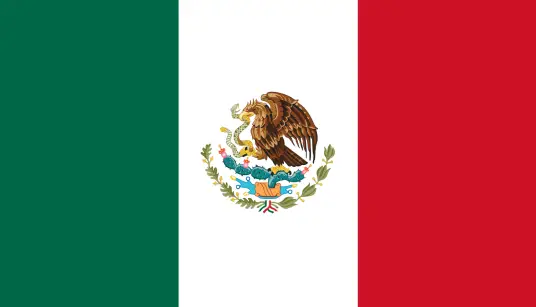
-
 Español
Español
-
 Portugues
Portugues
-
 Pусский
Pусский
-
 Français
Français
-
 Deutsch
Deutsch
-
 日本語
日本語
-
 한국어
한국어
-
 العربية
العربية
-
 Italiano
Italiano
-
 Nederlands
Nederlands
-
 Ελληνικά
Ελληνικά
-
 Svenska
Svenska
-
 Polski
Polski
-
 ไทย
ไทย
-
 Türk dili
Türk dili
-
 हिन्दी
हिन्दी
-
 Indonesia
Indonesia
-
 Melayu
Melayu
-
 Tiếng Việt
Tiếng Việt
-
 中文
中文
-
 dansk
dansk
-
 Magyar
Magyar
-
 қазақ
қазақ
-
 বাংলা
বাংলা
-
 עִברִית
עִברִית
-
 čeština
čeština
-
 Soomaali
Soomaali
-
 မြန်မာ
မြန်မာ
-
 فارسی
فارسی
-
 українська
українська
-
 norsk
norsk
-
 Gaeilge
Gaeilge
-
 беларускі
беларускі
-
 Română
Română
-
 ພາສາລາວ
ພາສາລາວ
-
 Filipino
Filipino
-
 lietuvių
lietuvių
-
 Cymraeg
Cymraeg
-
 македонски
македонски
-
 Suomalainen
Suomalainen
-
 slovenský
slovenský
-
 o'zbek
o'zbek
-
 اردو
اردو
-
 հայերեն
հայերեն
-
 Igbo
Igbo
-
 български
български
-
 سنڌي
سنڌي
-
 Shona
Shona
-
 සිංහල
සිංහල
-
 Hrvatski
Hrvatski
-
 íslenskur
íslenskur
-
 galego
galego
-
 català
català
-
 Zulu South Africa
Zulu South Africa
-
 Afrikaans isiXhosa
Afrikaans isiXhosa
-
 ಕನ್ನಡ
ಕನ್ನಡ
-
 lëtzebuergesch
lëtzebuergesch
-
 Indonésia Sunda
Indonésia Sunda
-
 basa jawa
basa jawa
-
 ગુજરાતી
ગુજરાતી
-
 Кыргызча
Кыргызча
-
 тоҷикӣ
тоҷикӣ
-
 Србија
Србија
-
 Twi
Twi
-
 Hawaii
Hawaii
-
 Cebu
Cebu
-
 नेपाल
नेपाल
-
 euskara
euskara
-
 Kurdî
Kurdî
-
 frissi
frissi
-
 יידיש
יידיש
-
 latvija
latvija
-
 slovenija
slovenija
-
 kiswahili
kiswahili
-
 ਪੰਜਾਬ
ਪੰਜਾਬ
-
 پښتو
پښتو
-
 საქართველოს
საქართველოს
-
 hua moni
hua moni
-
 bosna
bosna
-
 తెలుగు
తెలుగు
-
 தமிழ்
தமிழ்
-
 Kreyòl ayisyen
Kreyòl ayisyen
-
 Eesti
Eesti
-
 Corsica
Corsica
-
 Yoruba
Yoruba
-
 Gàidhlig na h-Alba
Gàidhlig na h-Alba
-
 Samoa
Samoa
-
 Монгол
Монгол
-
 Hausa
Hausa
-
 Azərbaycan
Azərbaycan
-
 አማራ
አማራ
-
 Shqipëria
Shqipëria
-
 Malagasy
Malagasy
-
 मराठी
मराठी
-
 മലയാളം
മലയാളം
-
 Malta
Malta
-
 ខ្មែរ
ខ្មែរ
-
 Chicheva
Chicheva
-
 中文(繁体)
中文(繁体)
-
 ଓଡିଆ
ଓଡିଆ
-
 Setswana
Setswana
-
 Afrikaans
Afrikaans
-
 Aymara
Aymara
-
 Башҡорт
Башҡорт
-
 Türkmenler
Türkmenler
-
 ትግሪኛ
ትግሪኛ
-
 Afaan Oromoo
Afaan Oromoo
-
 অসমীয়া
অসমীয়া
-
 Kinyarwanda
Kinyarwanda
-
 Ilocano
Ilocano
-
 Wolof
Wolof
-
 अवधी
अवधी
-
 Oluganda
Oluganda
-
 Bikol
Bikol
-
 Fulɓe
Fulɓe
-
 Kikongo
Kikongo
-
 Sango
Sango
-
 ދިވެހި
ދިވެހި
-
 Lingala
Lingala
-
 मैथिली
मैथिली
-
 Tsonga
Tsonga
-
 ꯃꯦꯏ ꯊꯥꯏ꯫
ꯃꯦꯏ ꯊꯥꯏ꯫
-
 brezhoneg
brezhoneg
-
 Furlan
Furlan
-
 नेवा
नेवा
-
 རྫོང་ཁ
རྫོང་ཁ
-
 Santali
Santali
-
 Аҧсуа
Аҧсуа
-
 Нохчийн
Нохчийн
-
 Чӑваш
Чӑваш
-
 Татар
Татар
-
 Batak Karo
Batak Karo
-
 دری
دری
-
 Diura
Diura
-
 Fengyu
Fengyu
-
 Eʋegbe
Eʋegbe
-
 Iban
Iban
-
 Fiji
Fiji
-
 Tonga
Tonga
-
 Inuktitut
Inuktitut
-
 Nahuatl
Nahuatl
-
 maaya yucatec
maaya yucatec
-
 Runasimi
Runasimi
-
 guarani
guarani
-
 Qafar
Qafar
-
 Acholi
Acholi
-
 Dinka
Dinka
-
 Luo
Luo
-
 Lundi
Lundi
-
 isiNdebele
isiNdebele
-
 Tshivenḓa
Tshivenḓa
-
 Sesotho sa Leboa
Sesotho sa Leboa
-
 Sesotho sa Borwa
Sesotho sa Borwa
-
 Ndumbe
Ndumbe
-
 Papuan Pidgin
Papuan Pidgin
-
 Rromani ćhib
Rromani ćhib
-
 Thok Nath
Thok Nath
yuxiatugong@163.com
+86 18353494641
-
 Español
Español
-
 Portugues
Portugues
-
 Pусский
Pусский
-
 Français
Français
-
 Deutsch
Deutsch
-
 日本語
日本語
-
 한국어
한국어
-
 العربية
العربية
-
 Italiano
Italiano
-
 Nederlands
Nederlands
-
 Ελληνικά
Ελληνικά
-
 Svenska
Svenska
-
 Polski
Polski
-
 ไทย
ไทย
-
 Türk dili
Türk dili
-
 हिन्दी
हिन्दी
-
 Indonesia
Indonesia
-
 Melayu
Melayu
-
 Tiếng Việt
Tiếng Việt
-
 中文
中文
-
 dansk
dansk
-
 Magyar
Magyar
-
 қазақ
қазақ
-
 বাংলা
বাংলা
-
 עִברִית
עִברִית
-
 čeština
čeština
-
 Soomaali
Soomaali
-
 မြန်မာ
မြန်မာ
-
 فارسی
فارسی
-
 українська
українська
-
 norsk
norsk
-
 Gaeilge
Gaeilge
-
 беларускі
беларускі
-
 Română
Română
-
 ພາສາລາວ
ພາສາລາວ
-
 Filipino
Filipino
-
 lietuvių
lietuvių
-
 Cymraeg
Cymraeg
-
 македонски
македонски
-
 Suomalainen
Suomalainen
-
 slovenský
slovenský
-
 o'zbek
o'zbek
-
 اردو
اردو
-
 հայերեն
հայերեն
-
 Igbo
Igbo
-
 български
български
-
 سنڌي
سنڌي
-
 Shona
Shona
-
 සිංහල
සිංහල
-
 Hrvatski
Hrvatski
-
 íslenskur
íslenskur
-
 galego
galego
-
 català
català
-
 Zulu South Africa
Zulu South Africa
-
 Afrikaans isiXhosa
Afrikaans isiXhosa
-
 ಕನ್ನಡ
ಕನ್ನಡ
-
 lëtzebuergesch
lëtzebuergesch
-
 Indonésia Sunda
Indonésia Sunda
-
 basa jawa
basa jawa
-
 ગુજરાતી
ગુજરાતી
-
 Кыргызча
Кыргызча
-
 тоҷикӣ
тоҷикӣ
-
 Србија
Србија
-
 Twi
Twi
-
 Hawaii
Hawaii
-
 Cebu
Cebu
-
 नेपाल
नेपाल
-
 euskara
euskara
-
 Kurdî
Kurdî
-
 frissi
frissi
-
 יידיש
יידיש
-
 latvija
latvija
-
 slovenija
slovenija
-
 kiswahili
kiswahili
-
 ਪੰਜਾਬ
ਪੰਜਾਬ
-
 پښتو
پښتو
-
 საქართველოს
საქართველოს
-
 hua moni
hua moni
-
 bosna
bosna
-
 తెలుగు
తెలుగు
-
 தமிழ்
தமிழ்
-
 Kreyòl ayisyen
Kreyòl ayisyen
-
 Eesti
Eesti
-
 Corsica
Corsica
-
 Yoruba
Yoruba
-
 Gàidhlig na h-Alba
Gàidhlig na h-Alba
-
 Samoa
Samoa
-
 Монгол
Монгол
-
 Hausa
Hausa
-
 Azərbaycan
Azərbaycan
-
 አማራ
አማራ
-
 Shqipëria
Shqipëria
-
 Malagasy
Malagasy
-
 मराठी
मराठी
-
 മലയാളം
മലയാളം
-
 Malta
Malta
-
 ខ្មែរ
ខ្មែរ
-
 Chicheva
Chicheva
-
 中文(繁体)
中文(繁体)
-
 ଓଡିଆ
ଓଡିଆ
-
 Setswana
Setswana
-
 Afrikaans
Afrikaans
-
 Aymara
Aymara
-
 Башҡорт
Башҡорт
-
 Türkmenler
Türkmenler
-
 ትግሪኛ
ትግሪኛ
-
 Afaan Oromoo
Afaan Oromoo
-
 অসমীয়া
অসমীয়া
-
 Kinyarwanda
Kinyarwanda
-
 Ilocano
Ilocano
-
 Wolof
Wolof
-
 अवधी
अवधी
-
 Oluganda
Oluganda
-
 Bikol
Bikol
-
 Fulɓe
Fulɓe
-
 Kikongo
Kikongo
-
 Sango
Sango
-
 ދިވެހި
ދިވެހި
-
 Lingala
Lingala
-
 मैथिली
मैथिली
-
 Tsonga
Tsonga
-
 ꯃꯦꯏ ꯊꯥꯏ꯫
ꯃꯦꯏ ꯊꯥꯏ꯫
-
 brezhoneg
brezhoneg
-
 Furlan
Furlan
-
 नेवा
नेवा
-
 རྫོང་ཁ
རྫོང་ཁ
-
 Santali
Santali
-
 Аҧсуа
Аҧсуа
-
 Нохчийн
Нохчийн
-
 Чӑваш
Чӑваш
-
 Татар
Татар
-
 Batak Karo
Batak Karo
-
 دری
دری
-
 Diura
Diura
-
 Fengyu
Fengyu
-
 Eʋegbe
Eʋegbe
-
 Iban
Iban
-
 Fiji
Fiji
-
 Tonga
Tonga
-
 Inuktitut
Inuktitut
-
 Nahuatl
Nahuatl
-
 maaya yucatec
maaya yucatec
-
 Runasimi
Runasimi
-
 guarani
guarani
-
 Qafar
Qafar
-
 Acholi
Acholi
-
 Dinka
Dinka
-
 Luo
Luo
-
 Lundi
Lundi
-
 isiNdebele
isiNdebele
-
 Tshivenḓa
Tshivenḓa
-
 Sesotho sa Leboa
Sesotho sa Leboa
-
 Sesotho sa Borwa
Sesotho sa Borwa
-
 Ndumbe
Ndumbe
-
 Papuan Pidgin
Papuan Pidgin
-
 Rromani ćhib
Rromani ćhib
-
 Thok Nath
Thok Nath

-
Share:
Contact us
Inquiry
-
E-mail:yuxiatugong@163.comWhatsApp:3236396607
Erosion-resistant, waterproof, rapid-deployment, strong flood control concrete canvas
Flood Control Concrete Canvas - Detailed Product Introduction
Introduction
Flooding remains one of the most significant natural disasters worldwide, causing damage to infrastructure, communities, and ecosystems.
With increasing urbanization, climate change, and extreme weather events, the need for resilient and efficient flood protection systems has never been greater.
The Flood Control Concrete Canvas represents a revolutionary geosynthetic cementitious composite mat (GCCM) technology designed to provide rapid, durable, and
effective flood mitigation solutions. Unlike traditional poured or sprayed concrete, this material can be installed quickly, even in challenging environments,
making it a critical tool for governments, disaster response teams, and infrastructure managers. This document provides a comprehensive technical overview
of Flood Control Concrete Canvas, covering material composition, engineering properties, applications, performance standards, installation practices,
case studies, lifecycle analysis, and future innovations.
Historical Development of Flood Control Materials
Historically, flood control relied on stone masonry, earth embankments, and poured concrete structures such as levees and floodwalls. While effective,
these traditional solutions required extensive labor, time, and resources. Over time, reinforced concrete became the standard for permanent flood defense systems.
However, conventional methods often lack flexibility, adaptability, and speed during emergency response situations. The advent of geosynthetics in the late
20th century introduced new possibilities, culminating in the development of GCCMs such as Flood Control Concrete Canvas. This innovation combined the
durability of concrete with the flexibility and lightweight nature of textiles, creating a versatile solution that could be deployed quickly and reliably
in diverse flood control applications.
Material Science and Composition
Flood Control Concrete Canvas is a three-dimensional geosynthetic structure impregnated with a specially formulated dry concrete mix.
It typically consists of three primary layers: a PVC or polyethylene backing for waterproofing, a dry cementitious powder layer, and a protective
nonwoven surface fabric. When hydrated, the cement powder activates, hardens, and forms a durable concrete layer. This process requires minimal water,
eliminating the need for mixing or complex machinery. Once set, the material achieves compressive strengths of up to 80 MPa, depending on thickness.
Variants are available in multiple thicknesses (CC5, CC8, CC13, etc.), allowing engineers to select the most appropriate type for specific flood control needs.
The result is a flexible, durable, and impermeable structure that performs reliably in flood-prone environments.
Engineering Challenges in Flood Control
Flood control systems face extreme pressures and environmental stresses. Rapid water flow exerts high shear forces on embankments and channels.
Prolonged submersion weakens conventional materials. Freeze-thaw cycles, saline intrusion, and debris impact exacerbate structural degradation.
The Flood Control Concrete Canvas addresses these challenges with its abrasion resistance, chemical durability, and ability to conform to uneven
substrates. Its low-carbon footprint compared to poured concrete also reduces environmental impact, aligning with modern sustainability goals.
Performance Requirements
Key performance benchmarks for Flood Control Concrete Canvas include:
1. Hydraulic Performance: High resistance to erosion under fast-flowing water conditions.
2. Structural Strength: Compressive strength of up to 80 MPa provides long-term durability.
3. Flexibility: Ability to conform to slopes, embankments, and irregular ground conditions.
4. Rapid Deployment: Can be installed up to 10 times faster than conventional concrete systems.
5. Longevity: Service life exceeding 50 years under normal flood control conditions.
6. Chemical Resistance: Withstands saline, acidic, and alkaline environments.
7. Sustainability: Requires less water and has a reduced carbon footprint compared to traditional concrete.
Applications in Flood Control Systems
Flood Control Concrete Canvas is used in a wide variety of applications:
- Levee Reinforcement: Provides erosion protection for earthen levees and embankments.
- Channel Lining: Ensures rapid water flow without scouring or soil erosion.
- Riverbank Protection: Stabilizes banks against seasonal flooding and wave action.
- Culvert Outlets: Protects against scour and erosion at drainage discharge points.
- Emergency Flood Barriers: Enables rapid deployment in disaster response scenarios.
- Coastal Defenses: Serves as a durable barrier against tidal surges and storm impacts.
Installation Practices
Installation of Flood Control Concrete Canvas is straightforward and efficient. Steps include:
1. Site Preparation: Remove debris, vegetation, and unstable material from the surface.
2. Deployment: Rolls of material are unrolled directly onto the prepared surface.
3. Anchoring: Edges are secured with ground pegs, trenching, or overlaps to prevent displacement.
4. Hydration: Material is hydrated with water using hoses, sprinklers, or immersion.
5. Setting: The material hardens within 24 hours and achieves full strength in 7 days.
6. Inspection: Overlaps and anchorage are checked to ensure continuous coverage and structural integrity.
Case Studies
- Mississippi River Levee, USA: Flood Control Concrete Canvas was deployed to reinforce embankments vulnerable to seasonal flooding, reducing maintenance costs.
- Bangkok, Thailand: Emergency flood barriers constructed with Flood Control Concrete Canvas provided rapid protection during monsoon flooding.
- Netherlands Coastal Defense: The product was used to stabilize riverbanks and prevent erosion in areas subject to tidal surges.
These case studies demonstrate the versatility and proven reliability of the material in real-world flood control scenarios.
Economic and Environmental Benefits
Flood Control Concrete Canvas reduces construction time and labor costs by enabling rapid installation with minimal equipment.
Its lightweight design reduces transportation costs and emissions. Lifecycle analysis shows that it requires less maintenance and replacement compared
to conventional methods, making it cost-effective in the long term. Environmentally, it minimizes carbon footprint, conserves water, and reduces the use
of aggregates. Its durability ensures fewer interventions, further lowering environmental impact.
Global Standards and Certifications
Flood Control Concrete Canvas is tested according to ASTM, EN, and ISO standards. ASTM D5199 measures thickness, ASTM D5035 evaluates tensile strength,
and ASTM D5890 validates hydration efficiency. EN 12467 assesses durability of cementitious materials under freeze-thaw cycles. Independent certifications
ensure compliance with national and international flood control guidelines. These standards provide confidence in the material’s long-term reliability.
Future Innovations
Future developments in Flood Control Concrete Canvas include smart sensor integration for real-time monitoring of hydraulic pressures and structural integrity.
Research into self-healing concrete additives aims to further extend service life. The use of recycled raw materials will reduce environmental impact,
while hybrid systems combining Concrete Canvas with geomembranes may provide enhanced impermeability. These innovations will expand the role of this
technology in sustainable flood defense strategies worldwide.
Conclusion
The Flood Control Concrete Canvas represents a paradigm shift in flood management technologies. It combines the durability of concrete with the flexibility
and ease of geosynthetic materials, offering unmatched advantages in speed, resilience, and sustainability. From levee reinforcement to emergency barriers,
it provides a reliable solution for protecting lives, infrastructure, and ecosystems from the devastating impacts of flooding. As climate change accelerates
and the frequency of extreme weather events rises, Flood Control Concrete Canvas will remain an essential component of resilient flood defense systems worldwide.






 Phone
Phone